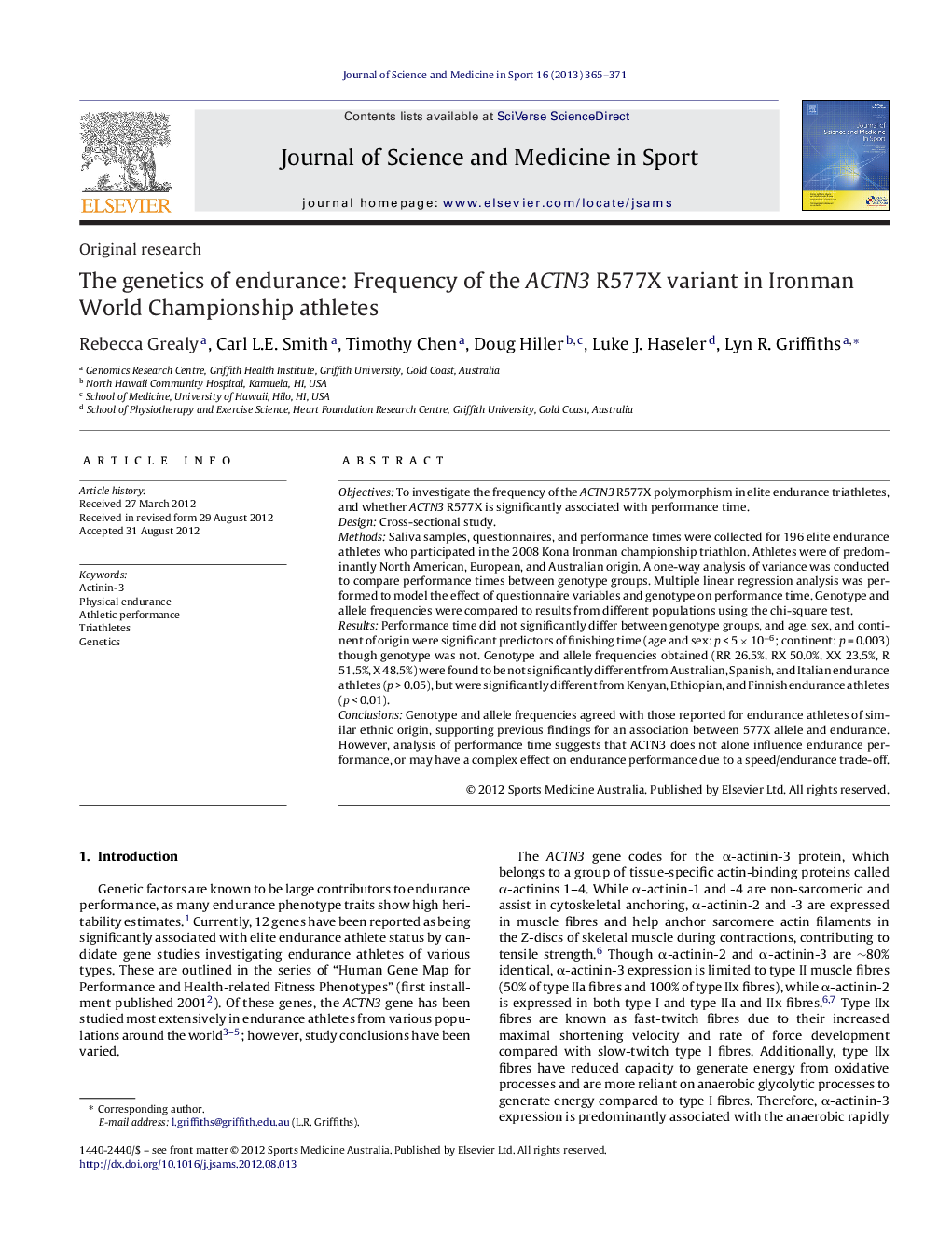| Article ID | Journal | Published Year | Pages | File Type |
|---|---|---|---|---|
| 2701470 | Journal of Science and Medicine in Sport | 2013 | 7 Pages |
ObjectivesTo investigate the frequency of the ACTN3 R577X polymorphism in elite endurance triathletes, and whether ACTN3 R577X is significantly associated with performance time.DesignCross-sectional study.MethodsSaliva samples, questionnaires, and performance times were collected for 196 elite endurance athletes who participated in the 2008 Kona Ironman championship triathlon. Athletes were of predominantly North American, European, and Australian origin. A one-way analysis of variance was conducted to compare performance times between genotype groups. Multiple linear regression analysis was performed to model the effect of questionnaire variables and genotype on performance time. Genotype and allele frequencies were compared to results from different populations using the chi-square test.ResultsPerformance time did not significantly differ between genotype groups, and age, sex, and continent of origin were significant predictors of finishing time (age and sex: p < 5 × 10−6; continent: p = 0.003) though genotype was not. Genotype and allele frequencies obtained (RR 26.5%, RX 50.0%, XX 23.5%, R 51.5%, X 48.5%) were found to be not significantly different from Australian, Spanish, and Italian endurance athletes (p > 0.05), but were significantly different from Kenyan, Ethiopian, and Finnish endurance athletes (p < 0.01).ConclusionsGenotype and allele frequencies agreed with those reported for endurance athletes of similar ethnic origin, supporting previous findings for an association between 577X allele and endurance. However, analysis of performance time suggests that ACTN3 does not alone influence endurance performance, or may have a complex effect on endurance performance due to a speed/endurance trade-off.
